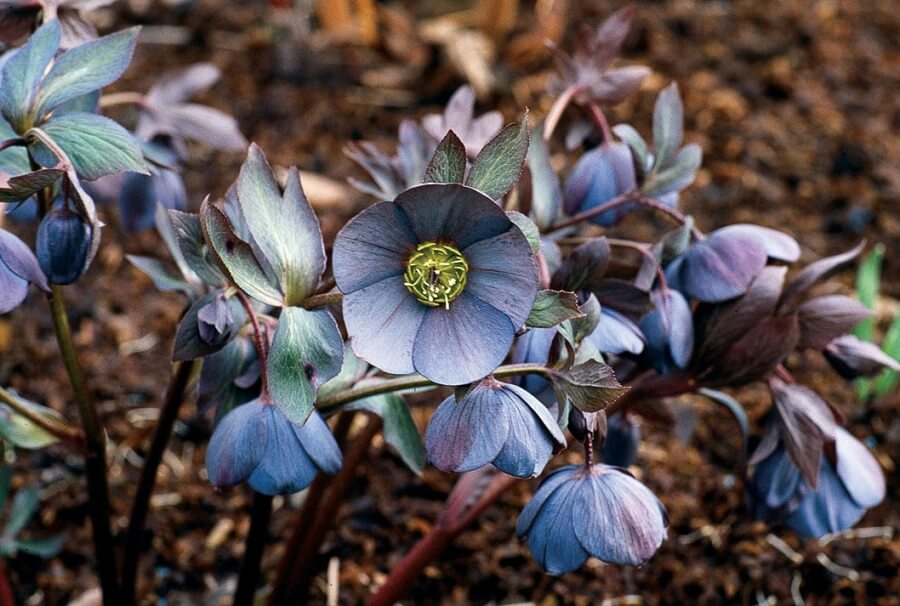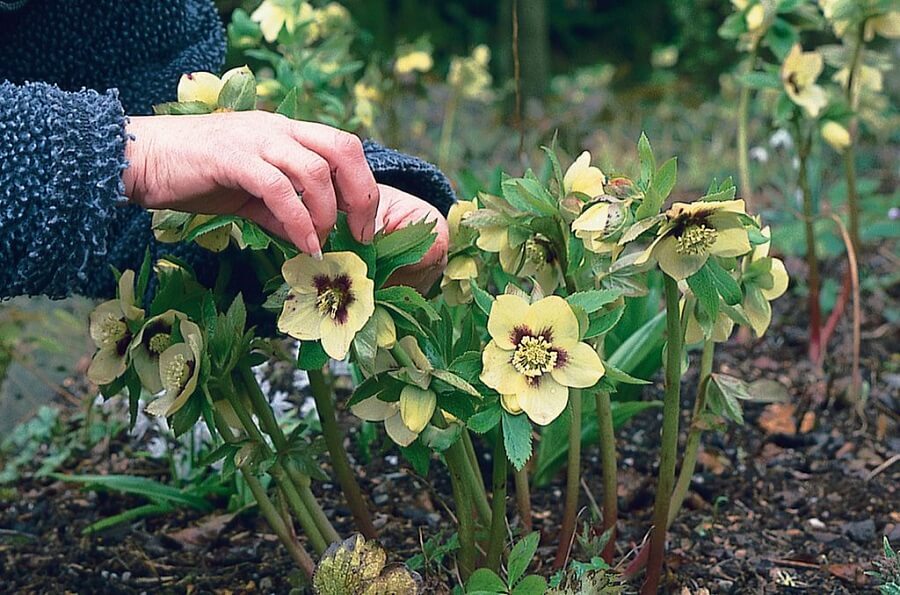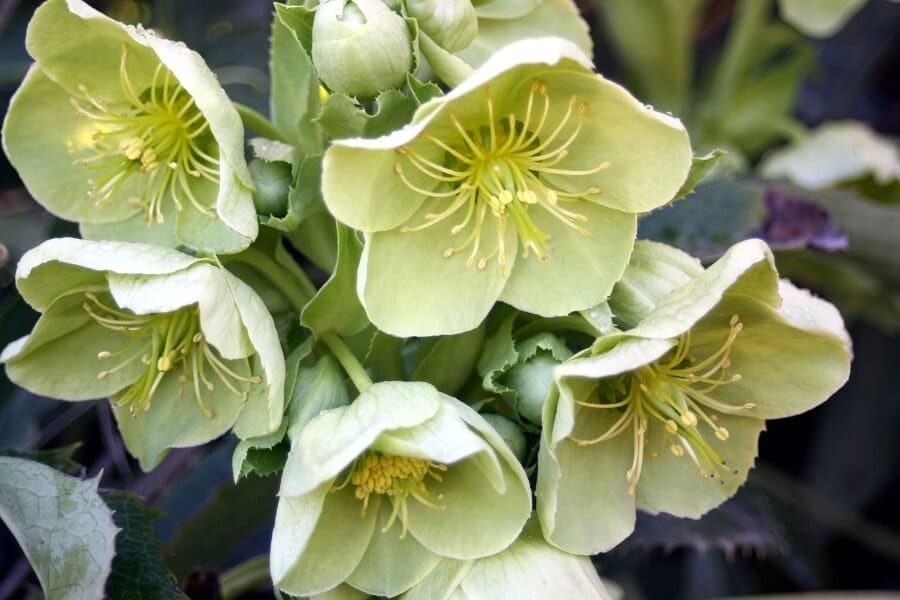Hellebores Varieties
There are multiple types of hellebores that you can choose from, depending on your needs and desires. For instance, if you want a type of rose that blooms early in winter and comes in a large variety of colors, then you should opt for the Helleborus orientalis, also called the Lenten Rose. Another interesting option is the Helleborus foetidus. This one is also called bear foot, or the stinking, due to its specific fragrance. A lot of people dislike it, which explains the nickname of the plant. Still, other people prefer it due to its gorgeous foliage and pastel green flowers. Its leaves are serrated and segmented, and they can become deep red when the weather is extremely cold. The edges of the flowers also have a deep red color sometimes. If you’re interested in white flowers, you might want to consider the Helleborus niger. Finally, the Helleborus argutifolius has lime-green flowers and evergreen leaves which have a leathery texture. This one is quite easy to maintain, but it requires more sun than other varieties.Hellebores Appearance
One of the things which make hellebores so attractive is the fact that they come in a myriad of colors. Even though most of them form clumps and are evergreens that grow quite low, their flowers can range from metallic black to dusty pink and lime green. They are shaped like a cup, and they last for months on end. You will mostly encounter single blooms that have 5 petals each, but you can also come across varieties that are double-petalled. Many gardeners breed hellebores to create even more spectacular colors, and these hybrid hellebores are extremely sought after.
Hellebores Uses
Since hellebores grow perfectly well in shaded areas, they are great for gardens or backyards that are filled with trees. You can plant them under trees, or even next to your house, and not worry that they won’t be able to grow without enough sunlight. You can even plant hellebores in pots, especially those varieties that you most want to protect. Furthermore, try combining hellebores in your garden with other types of perennials, such as anemone, hosta, begonia, or aquilegia. Another great idea is to plant them in between shrubs that have a complementary color, thus providing your garden with a lovely matching flower and foliage display.Growing Hellebores Tips
The first thing you should know about hellebores is that they prefer a well-drained soil that is rich in nutrients. If your soil is very dry, the plants might not be able to grow properly. You should also be careful to shelter the plants from cold winds and provide them with mulch annually. If you notice that the plants are not developing as they should, you can fertilize them with a general-purpose fertilizer in spring. Another thing that most hellebores prefer is shade, and this is especially true in the afternoon. While your plants are still developing, you should keep them constantly moist. After a year, the hellebores become more drought-tolerant, which means that you don’t have to water them as often. If any leaves become damaged or burnt, you can cut them off in autumn. This allows for new ones to grow and provides your plants with a more beautiful look. One of the greatest things about hellebores is the fact that they are not as sensitive to pests as other plants. In fact, because of their rough leaves, you don’t even have to worry about slugs or snails invading them. This doesn’t only mean less maintenance for you, but also healthier and more gorgeous flowers.Pruning Hellebores
The hellebores flowers are really small, and their massive leaves tend to overshadow them. Which is why removing old leaves just when the blooms are starting to take shape is a great idea. Especially if you notice the foliage has signs of disease, you should remove it immediately, if you want to prevent the rest of the plant getting affected as well. Pruning doesn’t only help keep diseases at bay. It also makes sure that you expose your flowers to insects that help with pollination. Insects also help your plants develop more seeds, which in turn ensures that you will be able to enjoy new plants soon enough.Propagating Hellebores
You can increase most species of hellebores in early spring by division. If you’ve never done this before, then you should know that the process is rather simple. All you have to do is split the clumps into reasonably sized pieces. The trick is for every clump to have one growth point. Then, you have to water them until they find their place in the soil. If you notice them growing slower than usual, or if the blooms are scarce next year, don’t worry. This is absolutely normal. Eventually, the plants will settle properly once their roots develop more.
Can I Use the Same Techniques for Growing Hellebores Flowers on Creeping Thyme?
Can I use the same techniques for growing Hellebores flowers on creeping thyme? Although Hellebores and creeping thyme have different growth requirements, you can still apply similar principles. When it comes to growing creeping thyme: step-by-step instructions are important. However, keep in mind that each plant has its unique needs, so adapting specific techniques is crucial for successful cultivation.








